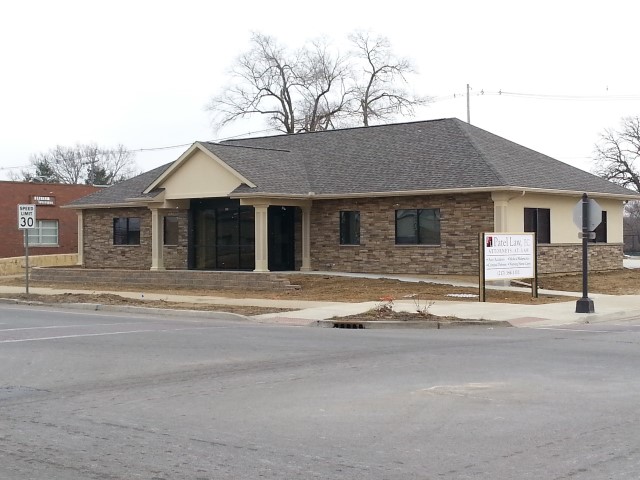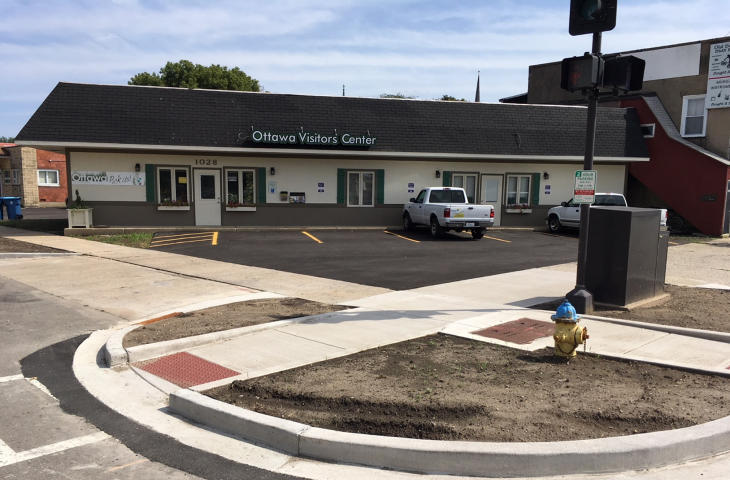From eyesore to asset: Brownfield redevelopment reinvigorates communities
Brownfield redevelopment transforms blighted, deteriorated and contaminated properties into community assets. The hope is to remove eyesores and entice development – everything from new parks, homes and retailers to commercial and industrial parks. To better understand brownfield redevelopment and its benefits, here are answers to some common questions that relate brownfield redevelopment projects.
 Right
Right
Left
What is a brownfield site?
It's a former industrial or commercial site that may have contaminants, hazardous substances or pollutants. The contaminated property cannot be a Superfund site. Superfund sites are another type of contaminated property where the cleanup work is managed and funded by the U.S. Environmental Protection Agency (EPA).
Who is eligible to apply for brownfields grants?
Eligible entities include municipalities, regional councils, redevelopment agencies, tribes, nonprofit organizations and other government entities. Entities that caused the contamination are not eligible for the grants.
What is a brownfield grant?
The EPA provides these grants to eligible properties to fund environmental assessment, cleanup, revolving loans, environmental job training, technical assistance, training and research at brownfield sites. The EPA awards about 300 grants worth about $60 million each year. There are three types of grants: Assessment, environmental cleanup and revolving loan.
 Right
Right
Left
What is the end goal for brownfield sites?
It's simple: Turn unusable or unwanted contaminated sites into prime redevelopment opportunities. Environmental concerns often equal a monetary risk for private developers and local governments. Brownfield grants help municipalities and others address the environmental concerns, so the site is prime for redevelopment, turning a liability into an asset.
What is the brownfield redevelopment process?
- What Site Inventory and Prioritization: There's never enough money to assess all the potential sites in the community. That's why it's important to have an inventory and prioritize it. That's usually a two-pronged approach. The first is determining redevelopment potential based on criteria developed by the community. One example is to pinpoint sites that are in tax incrementing financial districts because those get a higher prioritization. The second prong is the environmental condition of the site. At this point, you don't have data, so you are looking at historical information. For example, if you are looking at a filling station you'll look at how long it was in operation. If it's only operated for five years, the potential for contamination is less likely than a gas station that operated for 50 years.
- Phase I Environmental Site Assessment (ESA): We review historical sources for site background and surrounding areas to determine if recognized environmental conditions (RECs) are present. No sample collection or laboratory testing is completed during a Phase I ESA.
- Phase II ESA: We collect samples from areas identified as RECs during the Phase I ESA. We sample soil, groundwater, surface water, sediment, vapor and hazardous building materials.
- Report Contamination: We report contamination to the appropriate regulatory agency (Department of Natural Resources, Environmental Protection Agency, etc.) or enrolled in a state voluntary cleanup program.
- Site Investigation: This step is used to determine the extent of contamination in all applicable media and ensure all exposure pathways are considered. This is typically the longest step in the process. A site investigation report is completed and submitted to the state for review. Depending on the findings, a Remedial Action Plan may be needed to move to the next step.
- Remediation: In the case of highly contaminated brownfield sites, remediation is used to chemically or mechanically treat contaminated media to reduce contamination. Examples of remedial activities include chemical injections, excavations, and pump and treat systems for groundwater. Not all brownfield sites will require remediation, and depending on the intended end use, redevelopment may be a form of remediation. An example of this would be building a parking lot to create a barrier to prevent contact with contaminated media.
What should I expect if I live near a brownfield site that's targeted for cleanup? What if it's not slated for cleanup?
By following the brownfield redevelopment process above, we can determine the presence and extent of contamination at the site. Some sites are ready for redevelopment in a few months following the Phase I ESA with no further environmental testing required. However, some sites with more severe or extensive contamination may require substantial remediation. In these cases, it could take years, sometimes decades, before the site is ready for redevelopment. But be patient, and at the end of the brownfield redevelopment process, the vacant gravel lot or deteriorated building can be turned into housing, shopping center or park that vastly improves the neighborhood.
 Right
Right
Left
Collaborative, Insightful, Results-Driven Solutions
Fehr Graham provides innovative engineering and environmental solutions to help improve the lives and communities of our customers.

 Dillon Plamann is a Project Hydrogeologist at Fehr Graham. He helps with many projects, including soil and groundwater investigations, remedial activities, due diligence and building material assessments. He also works on reports, work plans, proposals, budgets, and Phase I and II ESAs. He can be reached at
Dillon Plamann is a Project Hydrogeologist at Fehr Graham. He helps with many projects, including soil and groundwater investigations, remedial activities, due diligence and building material assessments. He also works on reports, work plans, proposals, budgets, and Phase I and II ESAs. He can be reached at